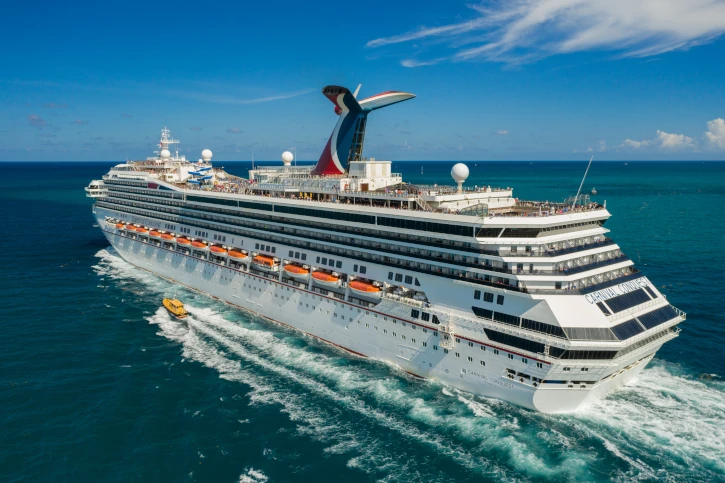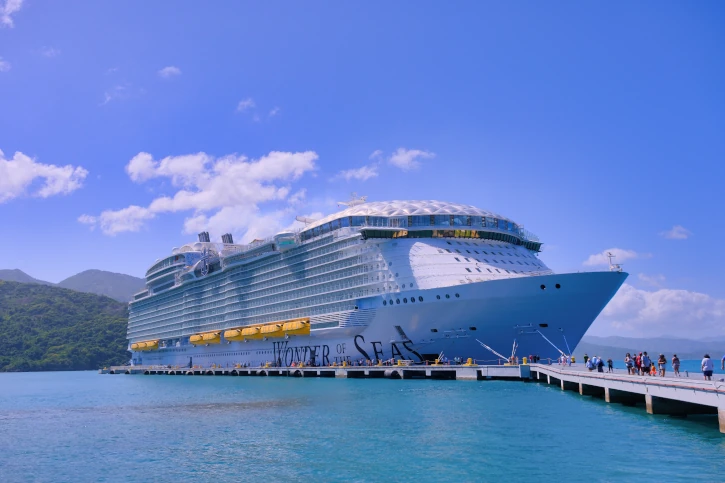Cruising has gained immense popularity as a travel option. Cruising offers a unique experience that combines relaxation, adventure, and convenience. It is a great way to explore many countries on a single vacation on a ship that is the equivalent of a floating hotel resort. Going on a cruise can be affordable, but it can also be expensive depending on your cruise destination, the cruise line, and the cruise ship that you choose to sail on. Cruising also has the added benefit of unpacking once, regardless of the amount of stops you explore on your vacation. But is cruising the right choice for you? To help you decide, we will dive into the pros and cons of cruising, helping you decide if going on a cruise vacation would be an excellent fit for you.
The Pros of Cruising
As you read about the pros and cons of cruising, you should take into consideration the pros of cruising before considering any cons. This is especially true if cruising will be a new type of vacation for you. It is easy to say that you will be stuck on a ship at sea without the ability to get off without considering the positive aspects of cruising. Taking into consideration the pros of a cruise vacation first might sway your decision to try a cruise instead of scaring you away from one.
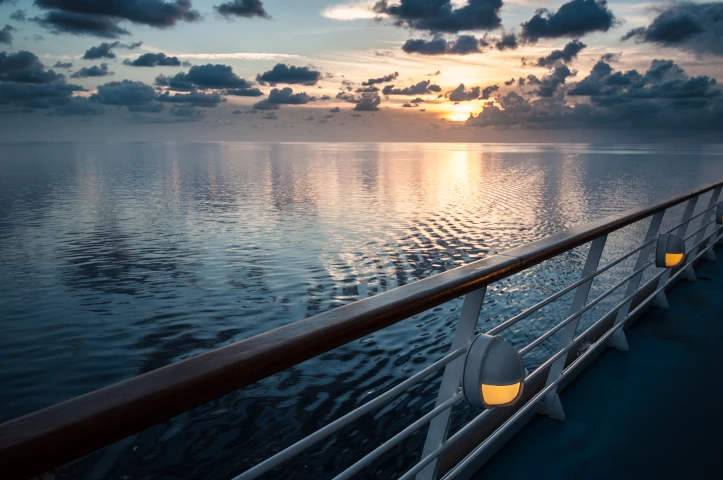
Cruising is Customarily an All-Inclusive Experience
All-inclusive vacations are very popular. There is no need to worry about the additional expenses of purchasing dinner and other types of activities. One of the significant attractions of cruising is the all-inclusive nature of this type of vacation. Your cabin, meals, entertainment, and many onboard activities are typically included in your cruise fare. This makes budgeting easier, as many costs are upfront, reducing unexpected expenses. While the main portion of a cruise vacation falls under an all-inclusive experience, there can be additional costs to consider, which I have listed and discussed in the con section. This is something to consider when weighing the pros and cons of cruising. An all-inclusive cruise vacation can be an affordable vacation. You can definitely save money on your cruise by sticking to the included amenities available on board.

There are a Number of Cruise Lines and Ships to Choose From for Your Cruise Vacation
There are several companies to choose from for your cruise vacation, such as Royal Caribbean, Carnival, and MSC. Each cruise line has different types of ships available for cruises. This is important as the type of ship you choose can make or break your vacation. Many cruise lines have smaller, older ships and newer, larger ships. Consider the purpose of your vacation when choosing the perfect ship.
The larger ships, such as the Carnival Celebration, have more amenities and exciting experiences, such as waterparks, waterslides, roller coasters, ice rinks, and even bumper car rides. The smaller ships offer a more cozy and quiet experience, as many do not provide the more exciting amenities. Needless to say, the larger ships with the extra amenities are a popular choice for families. The smaller ships are a more popular choice for those seeking a quiet vacation. You can tailor the perfect cruise vacation by choosing the type of ship you would like to sail on.
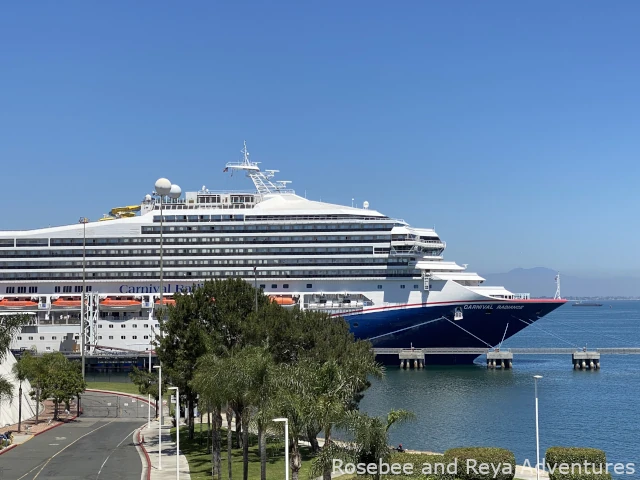
You Can Visit a Variety of Destinations on Your Cruise Vacation
Cruises visit multiple destinations during a single trip. This allows you to explore different locations you would otherwise not be able to see if you had to fly to each destination. This is ideal for those who want to taste various cultures and have the experience of visiting different countries without having to plan separate trips. A great example of this is the Panama Canal Cruise. On a Full-transit Panama Canal Cruise, you can visit places in the Caribbean, such as Grand Cayman, St Croix, Puerto Rico, St. Lucia, and Puerto Plata in the Dominican Republic. Many Latin American countries, such as Colon Panama, Cartagena Colombia, Puerto Quetzal, Guatemala, and various towns in Mexico, such as La Paz. While you will typically only have one day in each port, the benefit of visiting various locations is that you get a taste of the country and can decide whether you would like to return and spend more time in that destination.
A Few Cruise Sailings Offer Overnight Stays in a Destination
While most sailings offer one-day visits to their cruise destinations, there are a few sailings that offer overnight stays. This is an excellent option if you would like to visit a port destination for an extended amount of time. The only drawback is that this option is not very common, and you will have to search for these types of sailings on the website for each of the cruise lines.
A few destinations I have seen with overnight stays include Cabo San Lucas, Bermuda, and Ensenada, a few of the islands of the Society Islands, and cities on the east coast of the US. It is important to note that Cabo San Lucas is a tender port, so while you have an overnight stay in port, you will need to ensure that you are on the ship for your overnight stay by the tender deadline, as taking the tender is the only way to get back on the ship.
Many Cruise Ports Do Not Require a Tender
Cruise ports that do not require tenders are my favorite types of port stops. When a cruise ship requires a tender, this means that the cruise ship cannot stop at the dock, and passengers must hop on a smaller boat for a quick boat ride to the port. This really isn’t a problem and is very common in the cruise ship industry. Cruise ships have this down to a science and can accommodate people with mobility issues at tender ports.
While many stops require a tender, there are more stops that do not. I prefer non-tender ports as it is much quicker to get off the ship and start exploring a new destination. Another benefit of non-tender ports is that it is much easier to get back on the ship, have lunch, and go back into town and continue exploring the destination.
Subscribe to our Travel Newsletter!
Receive our free Packing Guide with Bonus Cruise Essentials Checklist and Waikiki Travel Guide with Map when you subscribe.
No Passport is Required for Many Types of Sailings
Another pro is that you can still enjoy a cruise vacation if you do not have a passport. There are different requirements for different cruise sailings, but for the most part, if you are going on a cruise that sails out of a port in the United States and will be returning to the same port, you can sail with a US birth certificate and a valid US ID. Just make sure your name is the same on all your documents. This is considered a closed-loop sailing. A passport is not required for closed-loop sailings.
This can change depending on the countries you visit, as some countries require a valid passport. However, this is a small handful of countries. This also changes if your cruise ends at a different port, such as a cruise through the Panama Canal that ends at a different port. This is considered an open-loop cruise. You will need a passport for an open-loop cruise.
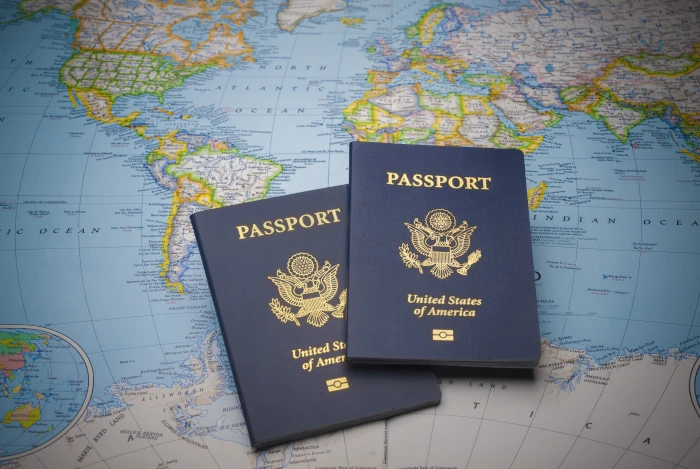
As a disclaimer to this information, you should always be sure to verify what documents will be required for your trip with the cruise line you will be cruising on. Document requirements differ if your name differs on your documents or you are traveling solo with a minor. Without the proper documentation, you will be denied boarding. The majority of cruise lines suggest that the best document to have is a passport.
While Cruising to Multiple Destinations, You Will Only Need Need to Unpack Once
This is one of the best things about cruising. You will visit multiple destinations without the hassle of constantly packing and unpacking. You unpack once and are done with that until the end of your cruise. This is even more of a benefit if you are on a more extended cruise such as a Panama Canal, Transpacific, or Transatlantic crossing.
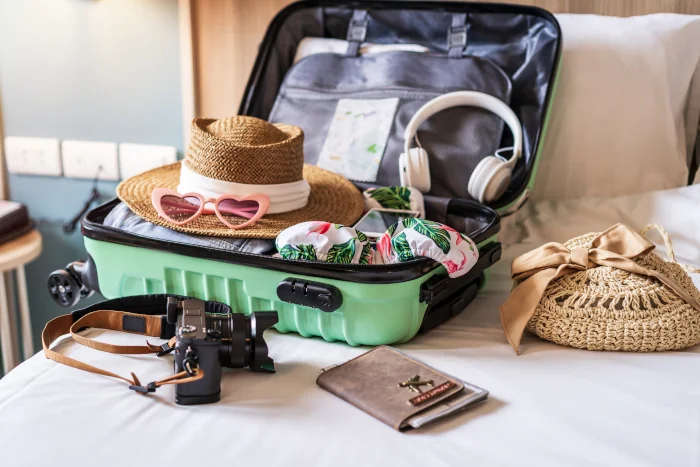
Cruise Ships Offer Resort-Like Amenities, Including Convenience and Comfort
Cruise ships offer a high level of convenience and comfort. Everything you need is on board, including various restaurants, entertainment, pools, gyms, spas, and more. This makes cruising a great option for those who prefer to have all amenities within easy reach.
Dietary Restrictions are Accommodated on Cruise Ships
Cruise lines can accommodate many dietary restrictions and food allergies. You should contact the cruise line to inform them of your dietary restrictions as soon as you book your cruise. You will more than likely speak with someone with the cruise line’s accessible travel department. Keep in mind that many cruise lines require about 60 to 90 days notice as they must prepare in advance for passengers’ dietary restrictions.
When you board your ship, you should speak to guest services to confirm that the dining department is aware of your dietary restrictions, especially if you have an allergy. Letting your table server know about dietary restrictions or allergies is also good. It would be even better to have the same table assigned to you with the same table staff, as they would be aware of your needs. Cruise staff go out of their way to ensure you have a safe cruise. This includes making sure dietary restrictions are accommodated.
Cruising Offers Many Social Opportunities
Cruises provide many opportunities to meet new people and make new friends. Whether at the dinner table, in the pool, or during onboard activities, you can connect with fellow travelers from around the world, which can make for a more enjoyable and engaging experience.
Cruise Vacations Offer a Variety of Onboard Entertainment and Activities
Cruise ships offer a large variety of entertainment options. There are so many options to choose from that you will not have a problem finding something fun to do. If you are traveling with kids, you will find a wide variety of fun activities for them as well. Many cruise ships have movie theaters or play evening movies on the jumbotron in their main pool area. You will also find nightclubs to dance the night away. Many cruise ships offer a dance club for teenagers earlier in the evening. There is also a casino where you can try your luck. Some cruise ships provide both a smoking and smoke-free casino as well.
You will also find activities such as theatrical shows, comedians, and magicians. Many ships offer incredible outdoor activities such as swimming pools, waterslides, waterparks, surfing simulators, miniature golf, basketball courts, and pickleball courts. There are countless activities on board, with the larger ships offering many of the upscale adventurous activities. Aside from this, indoor activities such as trivia, scavenger hunts, art auctions, and many shopping-related activities are usually scheduled. Every cruise ship has something for everyone, ensuring you won’t be bored during your journey.
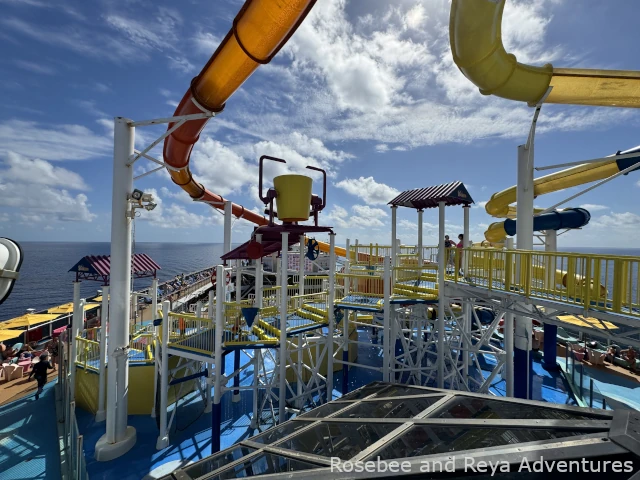
You Can Do Everything or Nothing At All
The best part about cruising is that you decide how you want your vacation to be. You can choose to participate in all activities, some activities, or do nothing at all. Nothing is wrong with deciding to lounge around the pool and relax. Most cruise ships offer adult-only pool areas if you are looking for a quieter pool option without kids. You can create your perfect vacation.
Cruising Offers Many Family-Friendly Options
Cruising offers many family-friendly options. Cruise ships have child programs that help parents enjoy their vacation. The child programs are separated by age group, and the kids are grouped accordingly to make a great environment for kids and help parents feel secure that their younger children are safe. Parents can drop off their kids, enjoy some me time, and then pick up their kids later. Some cruise ships also offer date nights, which allows parents to enjoy some nightlife at an additional charge.
Cruise ships also have dedicated areas and activities for children and teenagers, such as splash pads for younger children and basketball courts for teens looking to shoot some hoops. Cruise lines go out of their way to make their ships an attractive choice for families looking for a vacation where everyone can find something to enjoy.
The Cons of Cruising
Cruising has many pros, but as with any vacation, there could be enough cons to convince you to choose a different type of vacation. Cruising is a specific type of vacation that involves sailing for several days on a ship. This might not be the first choice for some vacationers. While reading about the pros and cons of cruising, it is a good idea to consider the cons in order to make an informed decision about whether to try a cruise vacation.
Embarkation Day Can Be Stressful
The day your cruise starts can be exciting. However, before your vacation begins, you need to get through embarkation day. This is the day when you present your documentation and board the cruise ship. Prior to embarkation day, you will need to check in for your cruise and make sure you have all the required documentation. You will also need to download the cruise line’s mobile app, which is very handy to use while on board. There are things that you can do to prepare for this day. For great tips, you can read our blog post on making the embarkation process easier.
The Disembarkation Day Process Can Be Stressful
Besides embarkation day stress, the disembarkation day process can be stressful. To avoid any stress, all you need to do is prepare in advance and understand your cruise line’s procedures. Cruise lines are very proactive when it comes to informing their passengers about the debarkation day process. They offer a disembarkation talk, deliver information sheets, and have the information readily available on their app.
For great tips and to understand what you can expect on disembarkation day, you can read our blog post on the disembarkation day process.
Cruise Vacations Offer Limited Time at Ports
This is an important point when considering the pros and cons of cruising. While cruises visit multiple destinations, the time spent at each port can be limited. Some port stops can be six hours, and other times eight hours. Spending a six or eight-hour day at a port is generally not enough time to fully explore a location or experience its unique attractions and culture.
For example, Amber Cove and Taino Bay are incredible cruise ports in Puerto Plata in the Dominican Republic. There is a chance you will not be able to enjoy the many amenities at either of these cruise ports if you go on an all-day excursion. If you stay in port, you will miss exploring the local town of Puerto Plata and experiencing its culture. Additionally, while excursions to visit the highlights of a port destination are offered, they generally do not stop at every location on their itinerary. And, if you go on an excursion that highlights a specific area, such as the Damajagua Waterfalls in Puerto Plata, you will miss the many other things to do in Puerto Plata. You will need to make a choice on what you would like to see in such a short time while visiting a country.

Cruises Often Have a Structured Schedule
While some exceptions exist, cruises operate on a set schedule, with specific times for meals and activities. You will need to note the time for activities you want to do and the open and close times for onboard activities such as the waterslides and casino.
When it comes to meal times, you will be competing with fellow passengers when you check in or book your cruise. There are typically three meal times: early sitting, late sitting, and your time. Early sitting is usually around 5:30 pm, and late sitting is typically between 8:00 and 8:30 pm. Cruise lines have different procedures regarding “your time dining.” However, this involves you making a reservation at the time that you would like to eat. The wait for a table can be 10 minutes or so. The longest we have had to wait is 90 minutes. We ended up canceling this reservation and eating in the buffet as we did not want to wait 90 minutes to eat dinner.
The structured schedule can feel restrictive for those who prefer more flexibility and spontaneity in their vacations.
Cruise Ships Can Get Crowded
Cruise ships can accommodate thousands of passengers, leading to crowded public areas and long lines for popular activities. This can detract from the sense of relaxation and tranquility some vacationers seek. This is very apparent on embarkation day when everyone waits for their staterooms to be available and eats lunch at the same time. It can be difficult to find a table on embarkation day. Excursions can also be crowded as many involve a bus with about 40 people who go on an excursion together.
The plus side is that people spread out on the ship as staterooms become available on embarkation day. Nowadays, ships are very large and accommodate the number of passengers they are designed for, with adequate space for everyone. Cruise ships don’t feel crowded with the exception of the buffet.
Cruising Vacations Often Have Additional Costs
While many aspects of cruising are included in the fare, specialty dining, excursions, drinks, WiFi, spa treatments and other items will incur additional costs. These extras can add up very quickly and seriously impact your budget. Another area where additional costs can creep up is the shopping area. Shopping on a cruise ship is duty and tax-free. It is easy to decide to purchase something when you consider the savings and add the charge to your sea pass or sail and sign card. This is the card you are given that will open your stateroom door. This card is also scanned if you make any purchases onboard your cruise. Using one card for everything makes purchasing items effortless. You must be careful when spending on your cruise as you can easily incur additional costs.
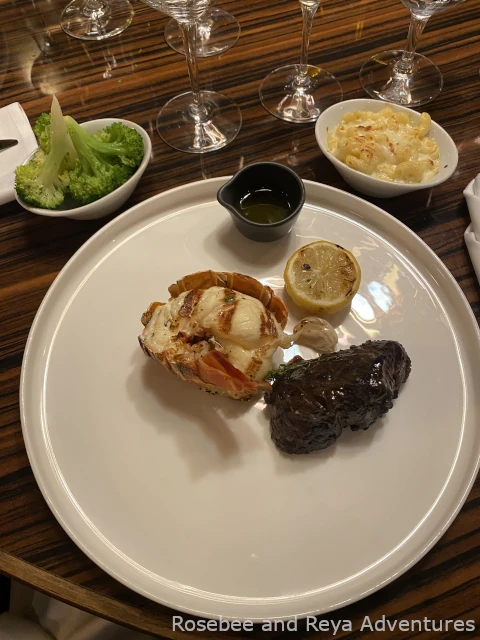

Cell Phone Use on a Cruise Is Expensive
This is an extremely important point when considering the pros and cons of cruising. You will hear past cruise passengers advise you to keep your cell phone on airplane mode. I can’t express this enough. If you use your cell phone throughout your cruise, your cell phone bill will be astronomical unless you have a special plan that allows you to use your cell phone on a ship. Even with a special plan, you should consult with your carrier to make sure you can use your cell phone on your cruise ship. This is one area where I do not take any risks. I have personally heard of a phone bill exceeding $1,000 after a cruise. This was from a friend who mistakenly thought their carrier covered all calls on the ship.
Unfortunately, this also means that you will be disconnected from family and friends most of the time unless you buy a WiFi plan and use an app such as Messenger or WhatsApp to communicate with them. Please do not make the mistake of signing up for a WiFi plan and thinking you can make phone calls. You will need to keep your cell on airplane mode.
There is No Control Over the Cruise Itinerary
Cruise passengers have no control over the itinerary, which is predetermined by the cruise line. If weather or other factors require changes to your cruise itinerary, you may find yourself visiting different ports, experiencing delays, or having more sea days than you would like. If ports get canceled, the cruise line will refund any port charges to your account. However, if you are not keen on having a lot of sea days, you should know that this could be a possibility. You should consider this when weighing the pros and cons of cruising.
While Visiting a Port, You Must Return to the Ship on Time or Risk Being Left Behind
You will be notified of the ship’s time when disembarking at a port. You must return to the ship by the all-aboard time based on the ship’s time. This can be confusing as the ship’s time might differ from the actual time in the city or town you are visiting. You will need to wear a watch or adjust your cell phone to not update based on your location. You risk being left behind if you do not return on time. If you are on a ship-purchased excursion, then they will wait if the excursion runs late. But if you are exploring on your own, they will more than likely leave without you.
Passports Are Not Required for Many Cruises
Wait, I thought this was a Pro?! Yes, this is a pro, but it can also be a severe con if you get left behind at a port in a foreign country. Imagine being in a foreign country without a passport. If this happens, you must contact the US consulate or embassy for an emergency passport to fly and rejoin the ship. You will bear the cost of doing this as well. Of course, you will not be entirely on your own. A representative of the cruise line will be at the dock to assist you. Ideally, it is better to travel with a passport. If you do get left behind, the cruise staff will have searched your room for your documents. Your passport will be handed to you at the dock if they find it, so it should be left in an obvious place, such as your stateroom safe.
If you are traveling without a passport, this is something to consider when weighing the pros and cons of cruising. The majority of passengers do not have a problem and return to the ship on time. Chances are you will not have a problem either. The easy solution here is to be back on the ship on time.
Some Ports Require the Use of a Tender
Cruise ships might not be able to dock at some ports, which requires the use of a tender boat to get to shore. A few ports that use tenders include Catalina Island, Cabo San Lucas, and Relax Away, Half Moon Cay. While this is not a major con, there is usually a long line of people waiting to get on a tender to go ashore. Thus, it takes longer to start enjoying your day in port. Some cruise lines issue tickets with time stamps, giving everyone a time when they can access the tender to get to shore. This does work better, but there is still a wait. Also, if the ocean is too rough, your day in port will be canceled as it might not be safe to tender to shore.
While Cruising, You Might Be At Risk of Getting Seasick or Other Illnesses
Cruising at sea is synonymous with seasickness. You may get seasick on your cruise if you are prone to seasickness. Of course, this is not a given. There is a chance you will not get seasick. You can minimize your chances of getting seasick by choosing a stateroom on a lower deck and towards the middle of the ship. There is less motion on these decks. You can also purchase medication to help you or use seasick patches.
There is also a chance of getting other illnesses, such as the Norovirus. Norovirus is highly contagious; everyone is at risk of getting it once a breakout occurs. If this happens, the staff on your cruise ship will immediately implement extra sanitation strategies to prevent the virus from spreading. One of the best strategies we can all participate in is washing our hands, especially before entering the buffet dining room. This is a crucial point to consider when weighing the pros and cons of cruising, especially if you are at risk for serious illness.
I personally have the tendency to get seasick on a ship. Luckily, I have not gotten seasick on a cruise ship. It always happens when I go snorkeling or diving. I am normally prepared with medicine, just in case. We also ended up on a cruise that had a Norovirus outbreak. Being on a cruise with an outbreak was stressful. We constantly washed our hands and tried not to touch anything in public areas, such as handrails. Luckily, we survived and did not get sick.
Health Emergencies Can Be Complicated
Things can get complicated if you have a health emergency while on a cruise. Although there is a medical facility on board all cruise ships, this is not the same as being able to go to a hospital. Your cruise vacation will end based on the type of medical emergency you have. A broken wrist from a fall during an excursion ended the vacation for a fellow traveler on our recent cruise. The passenger had to leave the cruise in a foreign country for medical attention.
For medical emergencies while sailing, you will need to be taken to the nearest port and transported to a hospital or airlifted from the cruise ship to the nearest hospital. This will be at your cost. Having travel and medical evacuation insurance to cover these expenses is a good idea. Both types of insurance work differently. Travel insurance will cover trip cancellations, medical costs, and other items based on your chosen plan and the company that you purchase the plan from. Medical evacuation insurance will help with the transportation costs to get you home. This is also important to consider when weighing the pros and cons of cruising, however, having insurance provides some peace of mind.

Cruising Has Several Environmental Impacts
Cruising has faced criticism for its environmental impact, including carbon emissions, waste generation, and damage to marine ecosystems. If you are an environmentally conscious traveler, you may need to weigh these factors when considering whether a cruise vacation is right for you. While cruise lines have been working to improve their negative impact on the environment and the ocean, there is still a long way to go before we can say that this is not a problem.
Conclusion on the Pros and Cons of Cruising
Cruising offers a unique and enjoyable way to travel, with a range of benefits, which include convenience, a variety of amenities, and all-inclusive experiences. However, cruising has drawbacks, such as limited time at ports and environmental concerns. Ultimately, whether cruising is the right vacation for you will depend on your preferences, travel style, and priorities. Consider the pros and cons I have outlined here as you plan your next adventure. If cruising aligns with your travel goals, it could be an unforgettable experience. If not, there are plenty of other travel options to explore. Safe travels!
Popular & Related Links
- 28 Cruise Tips for New Cruise Travelers
- The Essential Packing List for Your Cruise Vacation
- Doing Laundry on a Cruise, Everything You Need to Know
- The 17 Best Things to Do on the First Day of Your Cruise
- Visiting The Amber Cove Cruise Port in the Dominican Republic
- Taino Bay Cruise Port, A Guide to the Puerto Plata Cruise Port
- Half Moon Cay Cruise Port, A Guide to Carnival’s Private Island
- Grand Turk Cruise Center, The Ultimate Cruise Stop Guide
- Port Oasis Ecopark, A Cartagena Colombia Cruise Port Guide
- Puerto Quetzal Cruise Port in Guatemala, The Ultimate Guide
- Colon Cruise Port in Panama, The Ultimate Guide
- Catalina Island Cruise Port, The Ultimate Guide
- Santa Barbara Cruise Port And Shore Excursion Guide
- The La Paz Mexico Cruise Port, Everything You Need to Know

